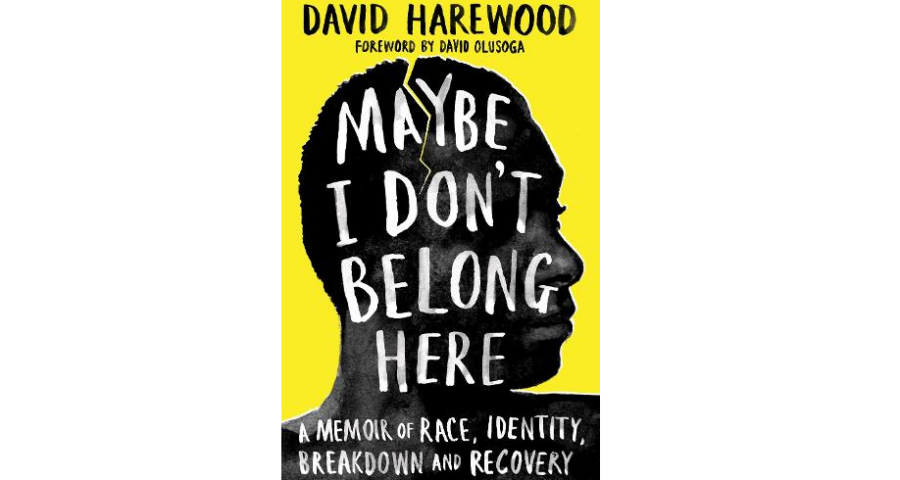David Harewood, ‘Maybe I Don’t Belong Here’
Published by Pan Macmillan ISBN 978-1-529064-13-1
Reviewed by NSUN member David Gibbs
This is “the tale of a Black kid from Small Heath in Birmingham” (page 1) who dared to dream – from the Heath to hospital to Hollywood and ‘back home.’ Like David, I grew up in this area walking the same streets either side of the Coventry Road. I too was a child of the Windrush Generation struggling with many of the same issues as the author. The late 60s and early 70s was a time of overt racism “part of the fabric of my life” (14), reduced opportunities for Black people and we “consumed so much British culture by that time that our British identities had taken over” (25). However, due to much hard work, a little luck, supportive parents and friends who “had literally saved my life” (208) and a good teacher, he achieved his dream to become a critically acclaimed actor.
The story is told with humility, honesty and humour. In recounting his experiences about his breakdown he knew and “felt that such an extreme event had to hold within it something of value for me” (138). His story resonates with me providing different examples but similar themes. It holds value for countless and nameless others whose story he is highlighting. He paints a vivid picture of his stays in hospital, his thoughts and bizarre behaviour. While in hospital he talks about the over-medication, hopelessness, lack of information and the treatment of the “crazy black man with dry skin, nappy hair, aggressive and scary” (195). The stories brings tears to your eyes, a few smiles along the way and joy because we see that he made it. It offers hope and opportunity.
Starting out in acting and making changes in how he presented himself caused some to call him a ‘coconut’ with people accusing him of selling out which led to feelings of rejection. The reviews and interviews focused on him being Black rather than the merits of the play and his performance. David reflected that he “hadn’t developed an understanding of the core part of my identity that was most obvious to others, my blackness… the white space was dismissing me and robbing me of any individuality and personality” (98). Hence, the title of the book; Maybe I Don’t Belong Here. After reading the book and viewing his documentaries Psychosis and Me and Will Britain Ever Have a Black Prime Minister?, I am not sure if the title should end with an exclamation or question mark, or both. The key words reflected throughout the book are identity, mental health and personal struggle which avidly reflects the subtitle “A Memoir of Race, Identity, Breakdown and Recovery.”
Chapter 7 is about his time at RADA (Royal Academy of Dramatic Arts) and subsequently getting to the heart of the matter. Despite doing well professionally he felt confused, and like his breakthrough Shakespearean role as King Lear at RADA he would go ‘mad’ having a psychotic period in his early 20s. Contributory factors were the psychological games played by a company member, politics and his own insecurities. The psychosis made him feel like “a shell, unable to comprehend the world around me, with no ability to focus or remember anything” (120). After his breakdown an important part of his recovery was finding community, rebuilding his identity to “piece together my fragmented psyche” (141) and joining a troupe where he “was no longer the only Black guy in the room” (141).
In chapter 13, after recounting his career highs, David draws together the elements of his identity impacted or influenced by mental health and racism. African American sociologist WEB DuBois writing in 1903 in The Souls of Black Folk spoke about ‘the problem of the Twentieth Century is the problem of the color-line’ and ‘double-consciousness’ where David currently speaks of his English self and Black self. The medical notes from his detention stated “Patient believes he is two persons” (185). This experience describes the dilemma of many first-generation immigrants and their children who no longer belong ‘back home’ the country of their origin or accepted in their country of residence. David wrapped himself up in whiteness and “completely underestimated the significance” of his Blackness (185). This contributed to his breakdown. He had to learn to give this proper attention and not internalise his feelings and fears, lessons some 30 years in the learning.
Throughout the book David gives several anecdotes about A-list celebrities. There are stories about his closest friends and family with nothing about any intimate relationships and very little about his unnamed wife. He also makes no mention of any spiritual connections growing up but admits in summing up that “At times I had felt that what I was going through was almost spiritual, transformative” (209). However, it is a very personable read, like a conversation with a friend where you are kept fully engaged. You have passing thoughts about some issues whilst understanding that things are left unsaid because they are for another time. His conversational book is the perfect anecdote and rebuttal to the controversial and disgraced Sewell Report – the Commission on Race and Ethnic Disparities. It is a true story which is representative of so many of our own.
This book may go well with Lenny Henry’s more comedic, Access All Areas: The Diversity Manifesto for TV and Beyond. The edited volume Safe: On Black British Men Reclaiming Space by Derek Owusu is also an informative read. Akala’s Natives: Race and Class in the Ruins of Empire provides a historical and political perspective.
Thank you David for the courage to share about your psychosis and recovery bringing together “biology, psychology and sociology-environmental factors” (220).

